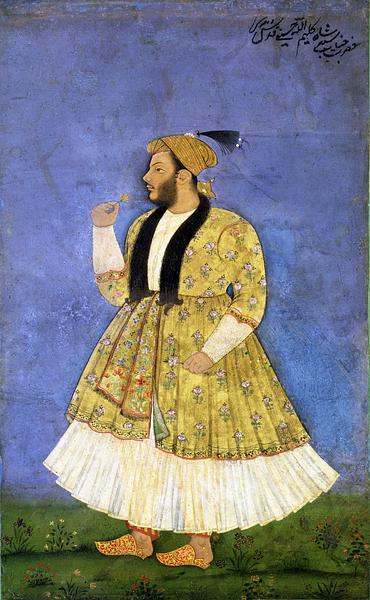Miniature pasted on an album leaf. ‘Portrait of Sayyid Shah Kallimullah Husayni’
India, Deccan, Golconda; 1670-1680
Miniature: 22 × 13.3 cm
Portraiture was one of the genres that became liberated in earnest in the 17th century from only being an illustration for a text, and it was during this century that Indian portraiture reached its culmination.
Painting in the Deccan was often more intense in its use of color, more exotic, and at times more eccentric than Mughal art. This is also true of the splendid portrait of Sayyid Shah Kallimullah Husayni, a close friend of Golconda’s last ruler, Abu’l-Hasan, before the country was conquered by the Great Mughal Aurangzeb in 1687. The chubby, richly clad Sayyid undeniably looks more like a courtier than a holy man.
Inv. no. 68/1979
Published in:
Mark Zebrowski: Deccani painting, London 1983, p. 192, fig. 157;
Kjeld von Folsach: Islamic art. The David Collection, Copenhagen 1990, cat.no. 51;
Kjeld von Folsach and Anne-Marie Keblow Bernsted: Woven Treasures: Textiles from the World of Islam, The David Collection, Copenhagen 1993, p. 41, fig. 5;
Kjeld von Folsach: Art from the World of Islam in The David Collection, Copenhagen 2001, cat.no. 76;
Kjeld von Folsach: For the Privileged Few: Islamic Miniature Painting from The David Collection, Louisiana, Humlebæk 2007, cat.no. 112;
Ole Zethner [et al.]: South Asian ways of silk: a patchwork of biology, manufacture, culture and history, Guwahati, Assam 2015, p. 123;
Kjeld von Folsach, Joachim Meyer: The Human Figure in Islamic Art – Holy Men, Princes, and Commoners, The David Collection, Copenhagen 2017, fig. 33, p. 122;
